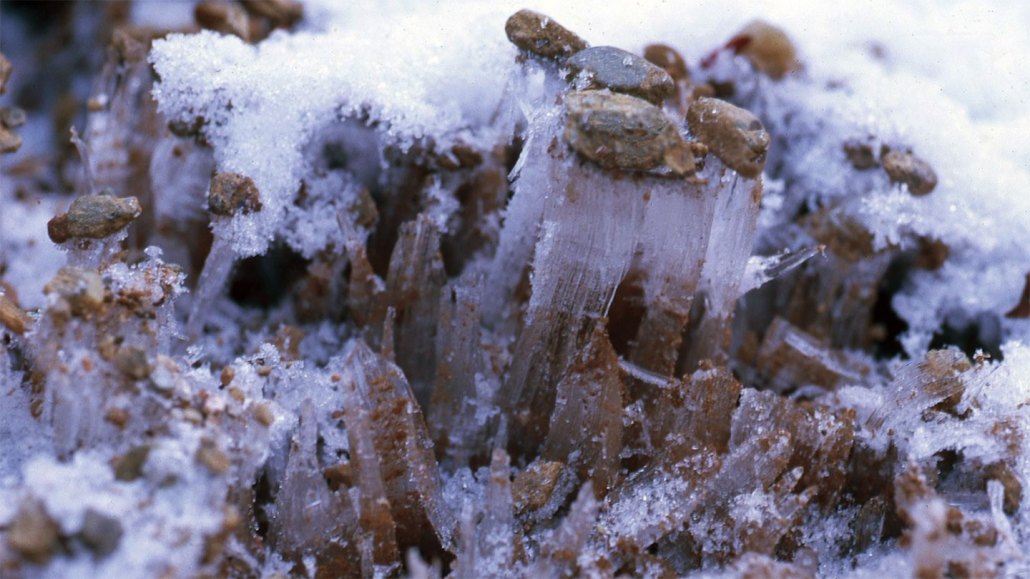
Moisture in soil forms ice needles as the air reaches freezing temperatures. Needles of rising ice can push up pebbles and soil (pictured). When temperatures warm and the ice needles collapse, the pebbles fall, creating patterns.
MICHAEL BURZNYSKI
By Beth Geiger
- More than 2 years ago
Read another version of this article at Science News Explores
Neat rings, stripes and swirls embellish many cold, rocky landscapes. Although these beautiful stone patterns look like humanmade artwork, they’re all natural. Scientists have long known that such rocky patterns result from freezing and thawing. But precisely how they develop has been a mystery — until now.
New experiments reveal that so-called “ice needles” can sort and organize rocks into many patterns, Anyuan Li of the University of Tsukuba in Japan and colleagues report the Oct. 5 Proceedings of the National Academy of Sciences.
“The beauty of [our] experiments is that you can actually see direct information on how the patterns form,” says Bernard Hallet of the University of Washington in Seattle, who has studied natural patterns in surface rocks around the world.

The researchers spread pebbles atop a pan holding moist, fine-grained soil, then froze and thawed this mini-landscape over and over. When the moist soil had not yet frozen but the air temperature dropped below freezing, tiny, needlelike columns of ice sprouted up from the soil. These ice needles, each up to a few centimeters high, lifted any stones atop them. When temperatures rose again, the ice collapsed and the stones tumbled off. Because the ice needles curved as they grew, the stones tended to fall off their icy pedestals to one side.
Over many freeze-thaw cycles, the ice needles cleared patches of exposed soil. Since needles could more easily form in spots where there were fewer rocks in the way, they more efficiently cleared out any remaining pebbles. Stones were gradually shuffled into clusters between stone-free areas to form larger patterns. The pattern that builds on a landscape “strongly depends on its [local stone] concentration,” says study coauthor Quan-Xing Liu, a theoretical ecologist at East China Normal University in Shanghai.

In lab experiments, the team “was able to able to get patterns after 30 freeze cycles,” says Hallet. That could equate to 30 cold nights — or 30 years, if each freeze lasted a whole winter. In the real world, Hallet says, some patterns might take “thousands, if not tens of thousands, of years to form.”
Using observations from their soil experiments, the researchers built a computer simulation of ice needle landscaping. This simulation could predict stone movement in the open environment under a range of conditions. The simulation confirmed that the rate of pattern formation depended on how dense the stone cover was, among other factors. The shapes and formation rates of patterns were also related to how moist the soil was, how the ground sloped and how tall the ice needles grew.
“We see identical patterns in different systems, such as fluids,” Hallet says of the rock formations. Materials with different characteristics or sizes often start all mixed together but don’t stay that way (SN: 4/22/21). Phase separation is the process that morphs these mixes into patterns. The new study is among the first to show how phase separation applies to landscapes.
The combination of experiments and computer modelling in this study provides a new way to connect how natural landscapes form and how their materials behave, says Rachel Glade, a geologist at the University of Rochester in New York who was not involved in the work. This approach “is vital for our understanding of complex materials,” she adds, and it could help us understand how landscapes may evolve differently in a changing climate.






